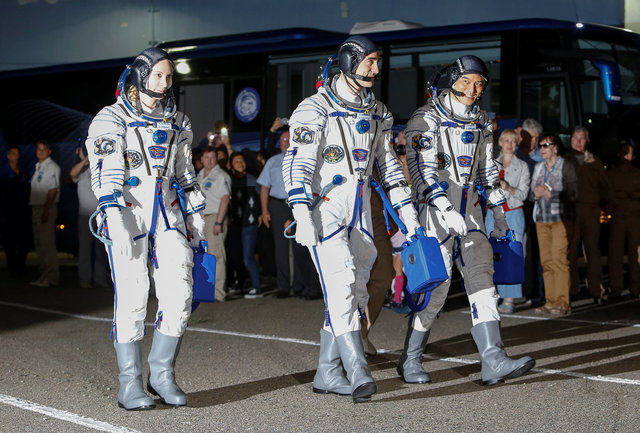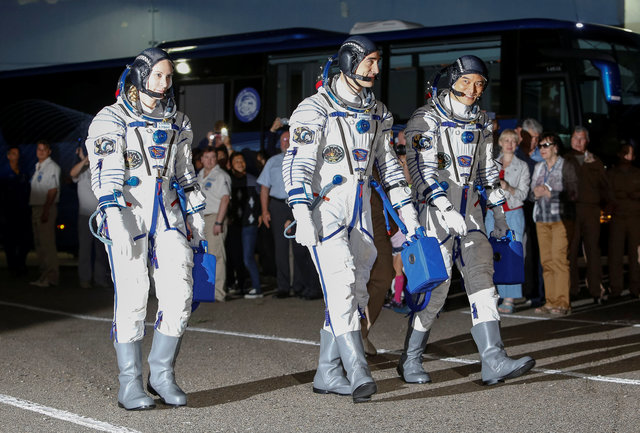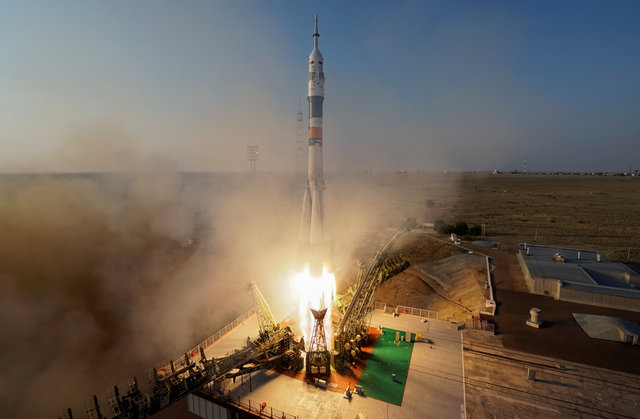Multinational crew blasts off for International Space Station


The International Space Station crew members (L to R) Kate Rubins of the U.S., Anatoly
Ivanishin of Russia and Takuya Onishi of Japan walk after donning space suits at the
Baikonur cosmodrome, Kazakhstan, July 7, 2016. (Photo: Reuters)
A three-member multinational crew has blasted off aboard a Russian Soyuz rocket from Kazakhstan for a two-day trip to the International Space Station.
NASA astronaut Kathleen “Kate” Rubins, Russian cosmonaut Anatoly Ivanishin and Japanese astronaut Takuya Onishi lifted off from the Baikonur Cosmodrome on Thursday morning.
“We wish you good luck,” a Russian flight controller radioed to the crew, an interpreter for NASA TV said.
The crew’s Russian Soyuz capsule is scheduled to arrive at the station, which orbits about 400 kilometres above Earth, to begin a four-month mission.
“I’m incredibly excited about a lot of the biology experiments we’re going to be doing,” Rubins, 37, said in a NASA interview before launch.
Rubins, a cancer and infectious diseases researcher, plans to attempt the first DNA sequencing in orbit.
She, Ivanishin, 47, and Onishi, 41, will join NASA astronaut and station commander Jeff Williams and two Russian cosmonauts who have been aboard the orbital outpost since March.
Ivanishin has made one previous flight to the station. Rubins and Onishi are both rookie astronauts.

The Soyuz MS spacecraft blasts off from the launchpad at the Baikonur cosmodrome,
Kazakhstan, with a multinational crew of three on board. (Photo: Reuters)
The launch marked the debut flight of a next-generation Russian Soyuz capsule, currently the only vehicles capable of ferrying crewmembers to and from the station, a $US100-billion project of 15 nations.
Upgrades to the Soyuz include better shielding to protect the spacecraft from micrometeoroid and orbital debris impacts, additional batteries, improved communications and tracking equipment, new steering thrusters, larger solar arrays, an improved rendezvous and docking system and a GPS-equipped landing system.
NASA hopes to resume flying station crewmembers from the United States in 2018 aboard capsules under development by Boeing Co and privately owned Space Exploration Technologies, or SpaceX.
A docking system that the new commercial U.S. spaceships will need to park at the station is scheduled to be launched aboard a SpaceX cargo ship on July 18.
– Reuters


